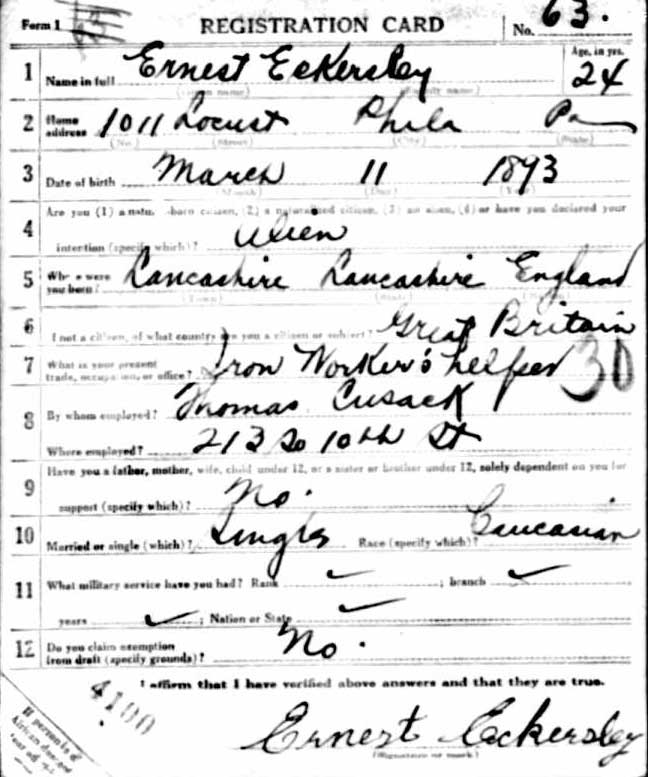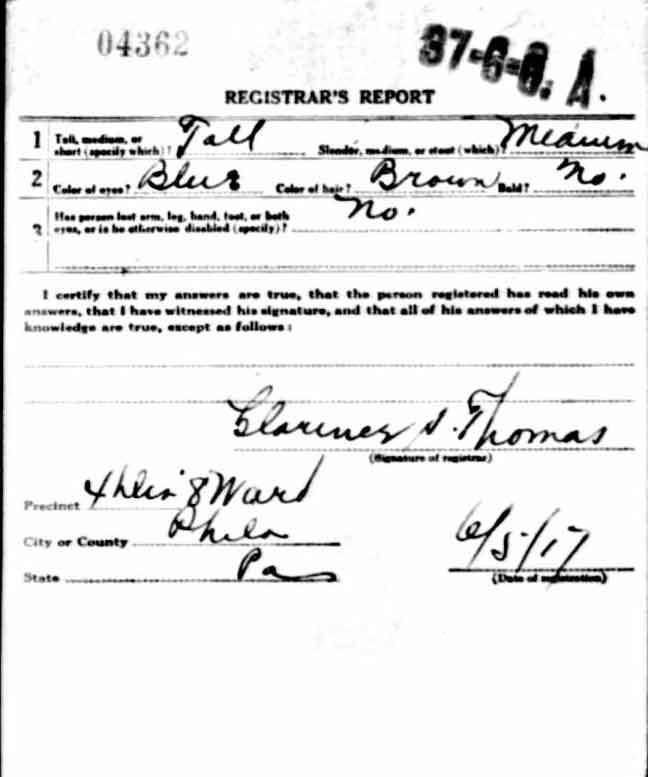|
|
|
|
|
|
|
PRIVATE ERNEST ECKERSLEY was born in Farnworth, Lancashire, England on March 11, 1893 to David and Ann Eckersley. Last residing in Farnworth, Ernest Eckersley came to America with his mother and sister Helen on the steamship Bergenland, sailing from Liverpool for Philadelphia on January 23, 1901, to join his father in North Camden. His father had come before them, and lived at 537 North 10th Street when his family arrived in America. The Eckersley family lived at a widow, Mrs. Ellen Van Hart, at 1005 Penn Street in Camden NJ. They had had moved to 719 North 9th Street by the time America entered the War. By June of 1917 Ernest Eckersley had moved to 1011 Locust Street in Philadelphia PA. He worked as an iron worker and helper for Thomas Cusack of 213 South 10th Street, Philadelphia PA, and was unmarried when he registered for the draft on June 5, 1917. Ernest Eckersley was rejected three times for enlistment in the United States Army and finally went to the Canadian Recruiting Mission in Philadelphia, where he was accepted. He was assigned to a British Army unit, the Lancashire Fusiliers. Private Ernest Eckersley was killed in action during the Battle of the Ancre, on April 5, 1918. He was survived by his father and sister. His father was still lodging with Mrs. Van Hart as late as April of 1930, at 714 North 9th Street in North Camden. Private Eckersley is memorialized at the Arras Memorial in Arras, France The Arras Memorial is in the Faubourg-d'Amiens Cemetery, which is in the Boulevard du General de Gaulle in the western part of the town of Arras. The cemetery is near the Citadel, approximately 2 kilometers due west of the railway station. The Memorial commemorates almost 35,000 casualties of the British, New Zealand and South African Forces who died between Spring 1916 and 7th August 1918, with the exception of casualties of the Battle of Cambrai in 1917, and who have no known grave. The design, by Sir Edward Lutyens, consists of a cloister, 25 feet high and 380 feet long, built up on Doric columns and faces west. In the broader part of the site the colonnade returns to form a recessed and open court, terminated by an apse in front of which is the Arras Flying Services Memorial. The names of the casualties are carved on stone panels fixed to the cloister walls. |
| World War I Draft Card | |

|

|
RETURN TO CAMDEN COUNTY WAR DEAD INDEX